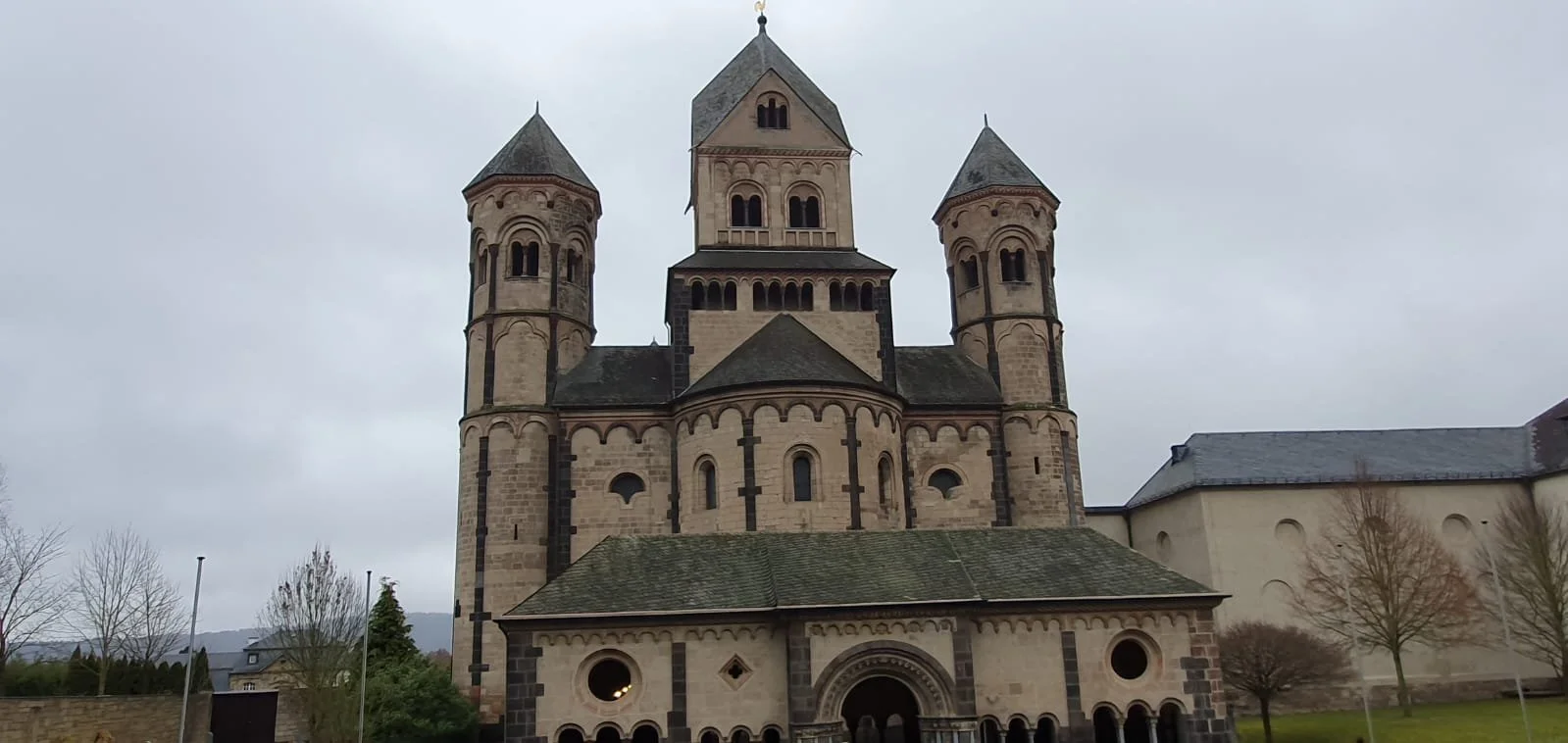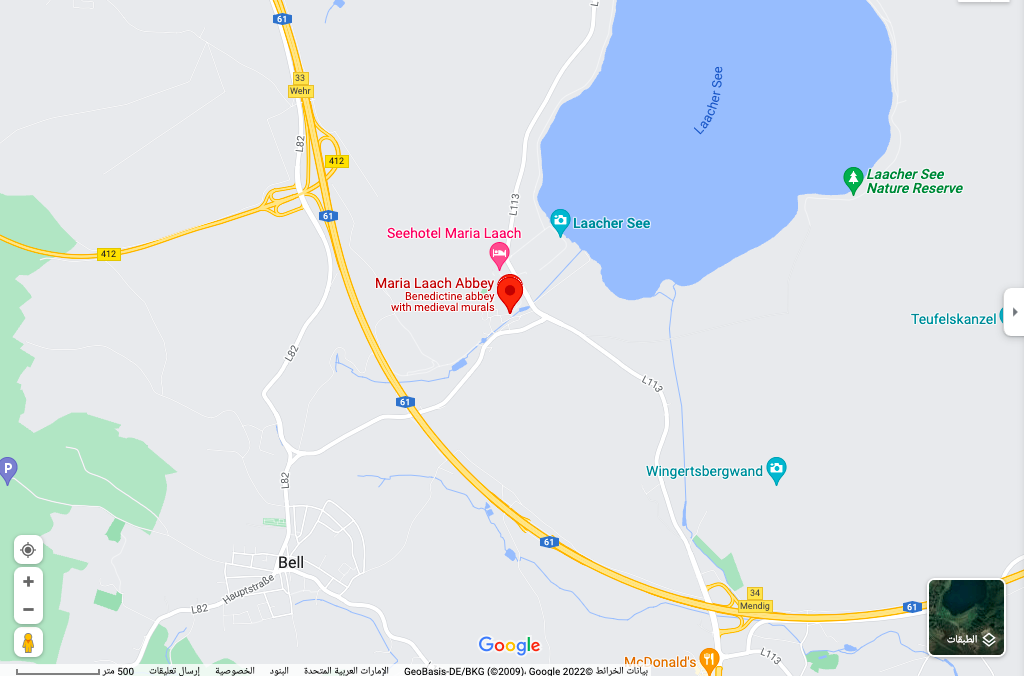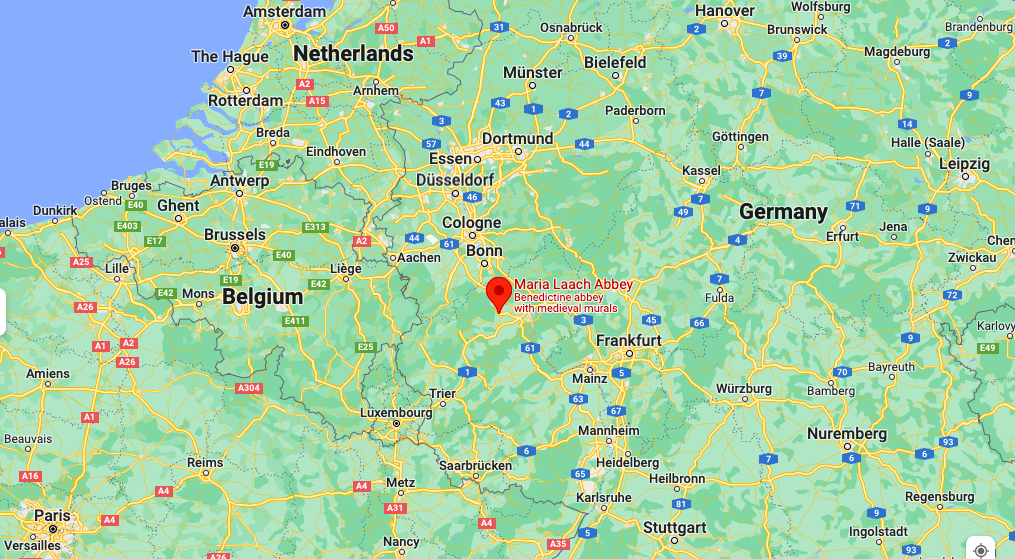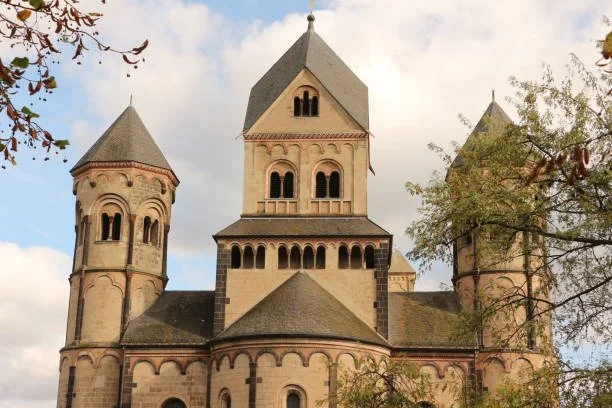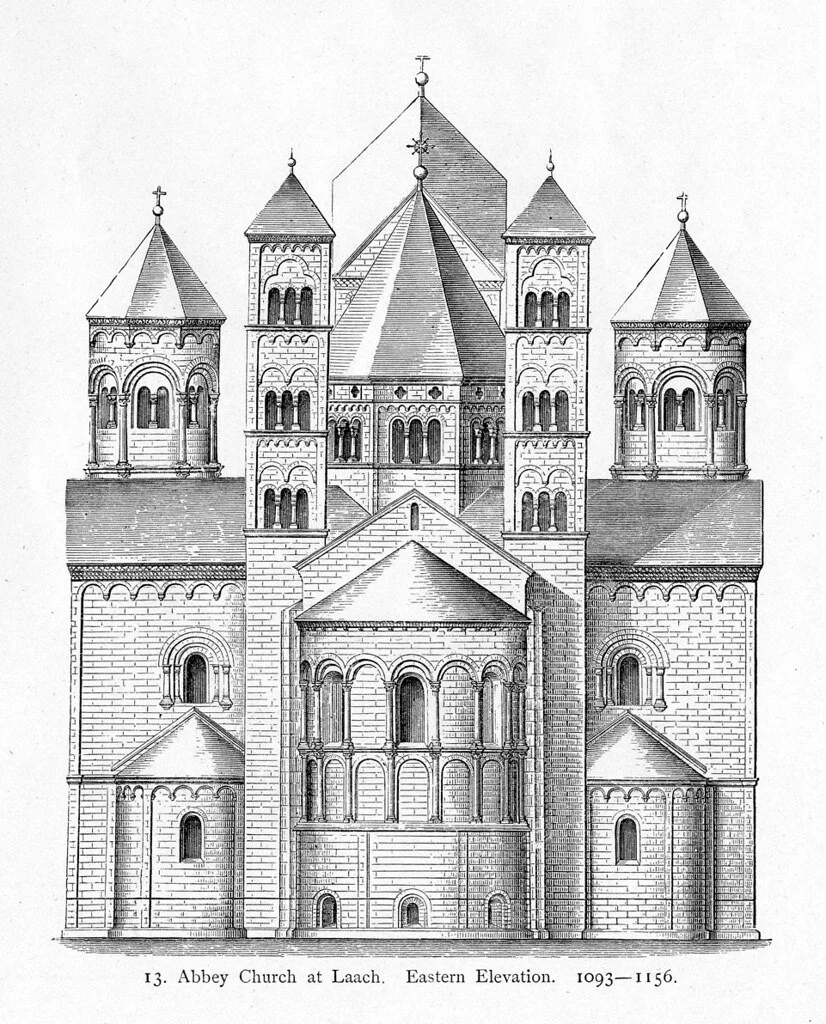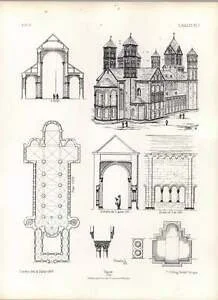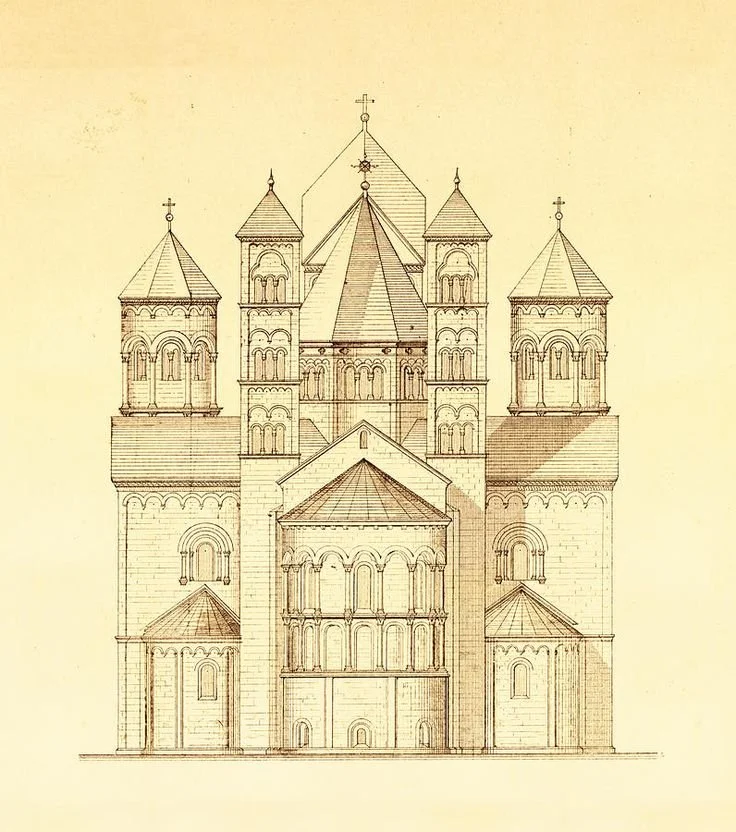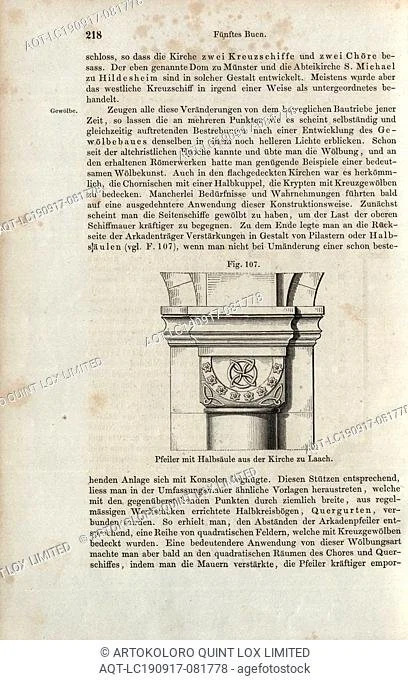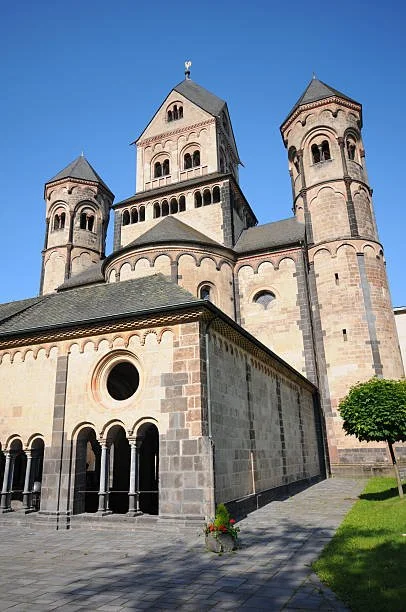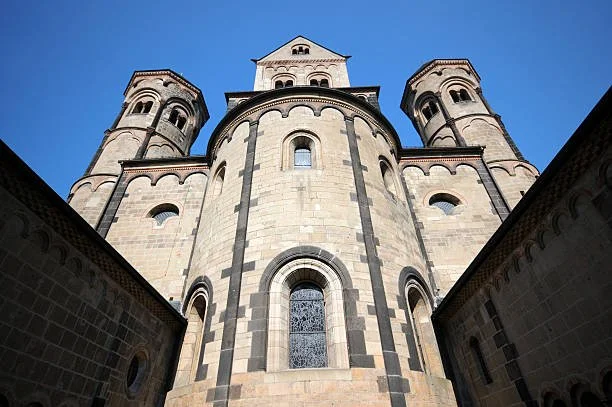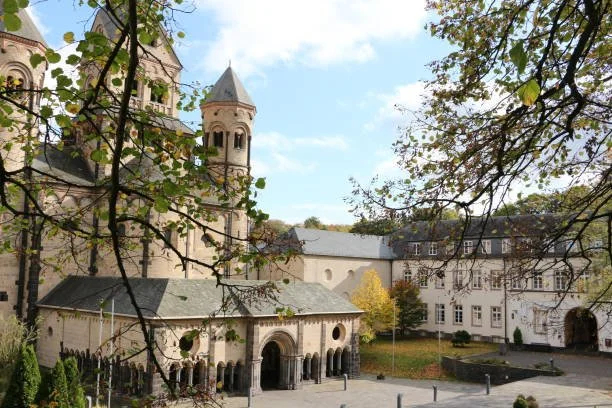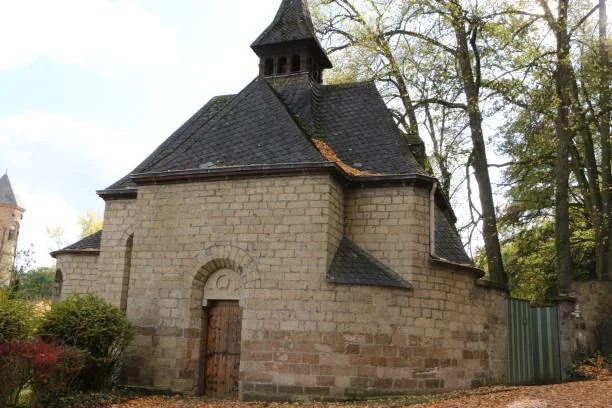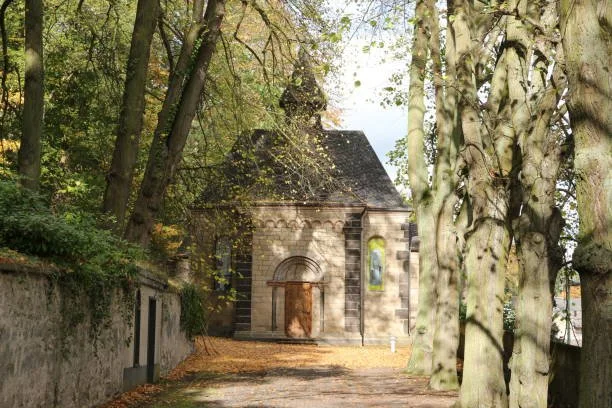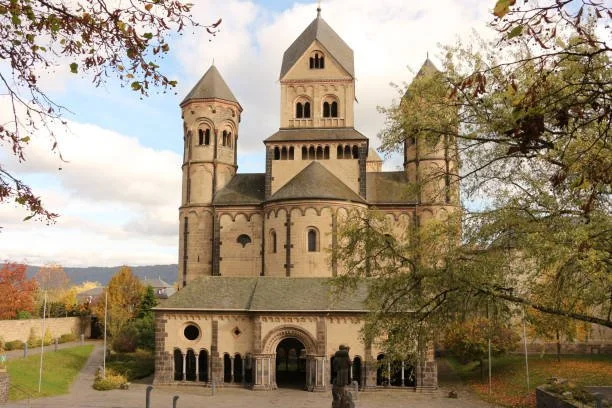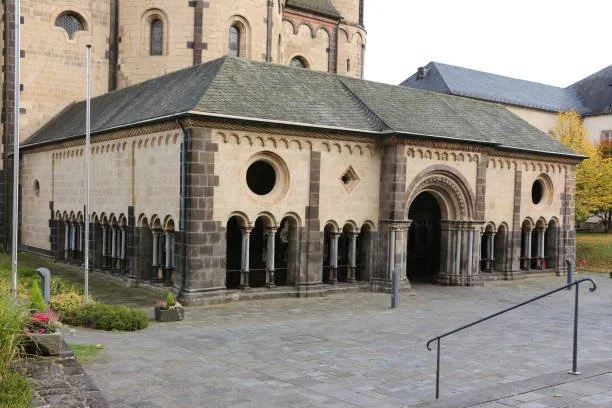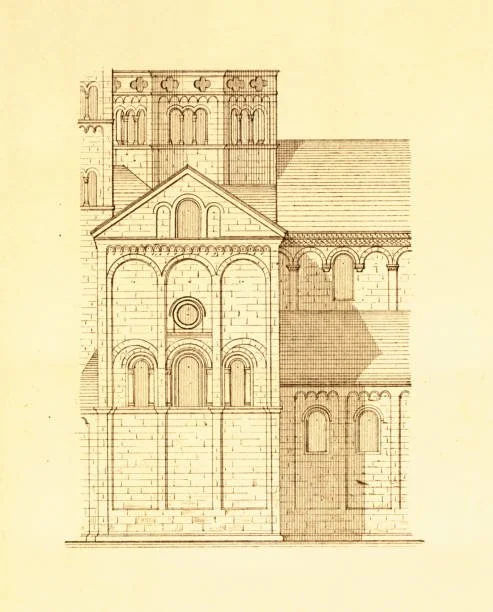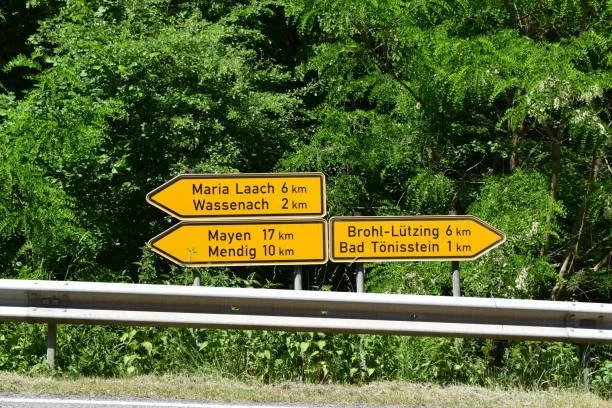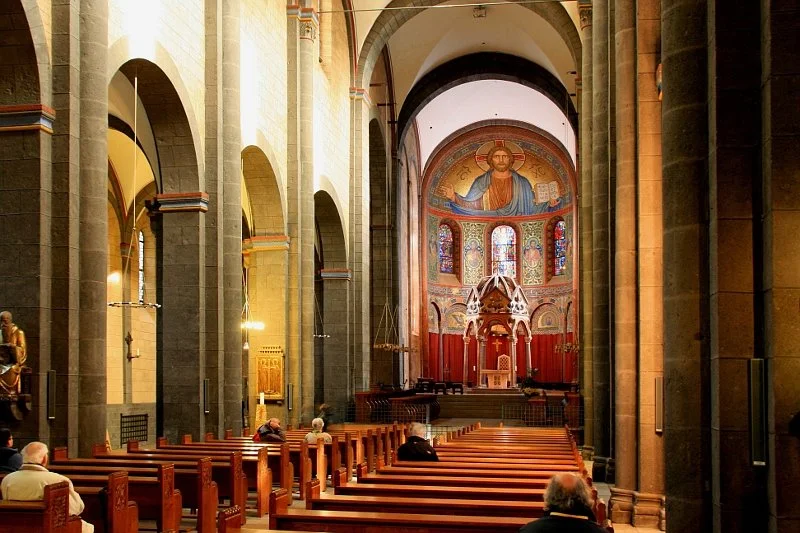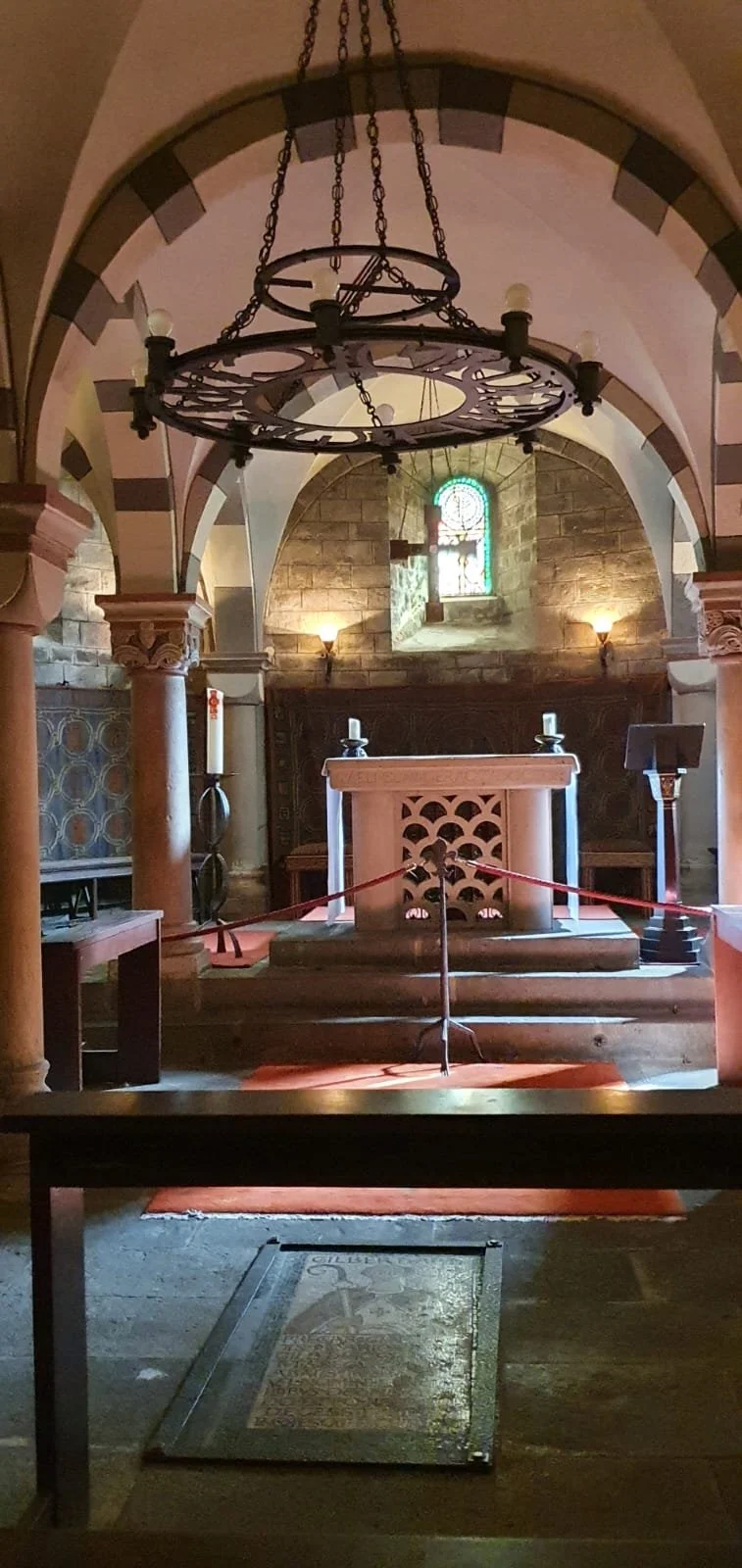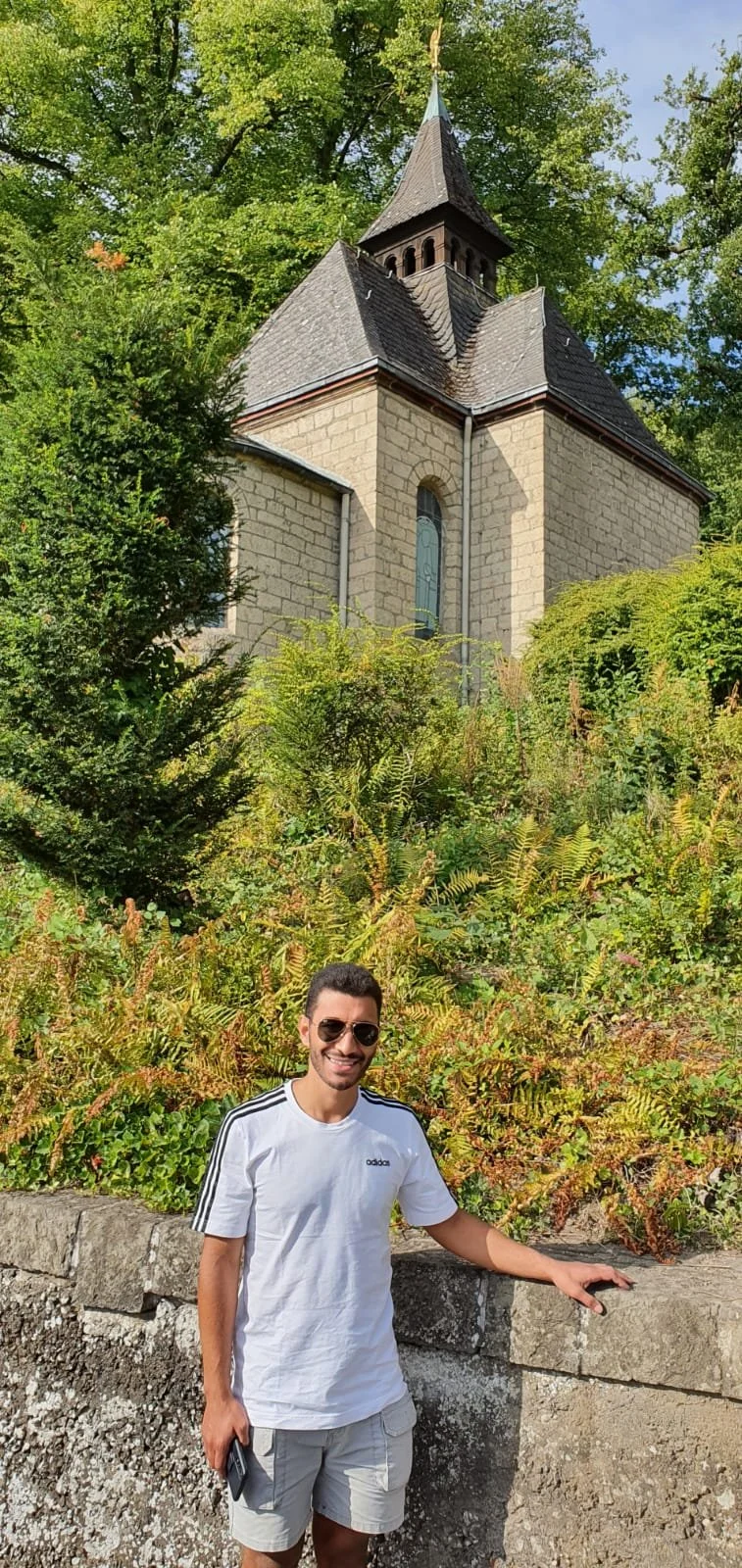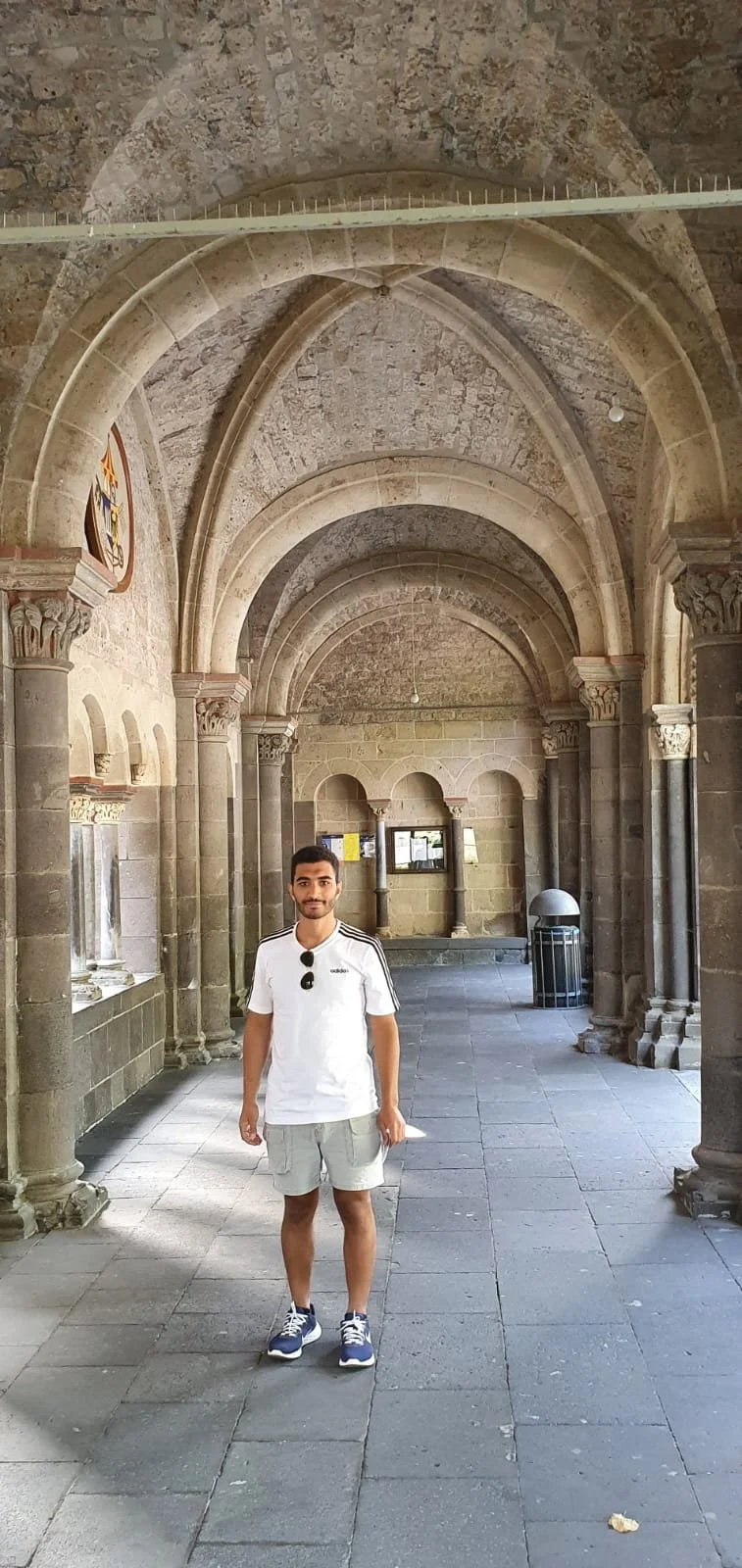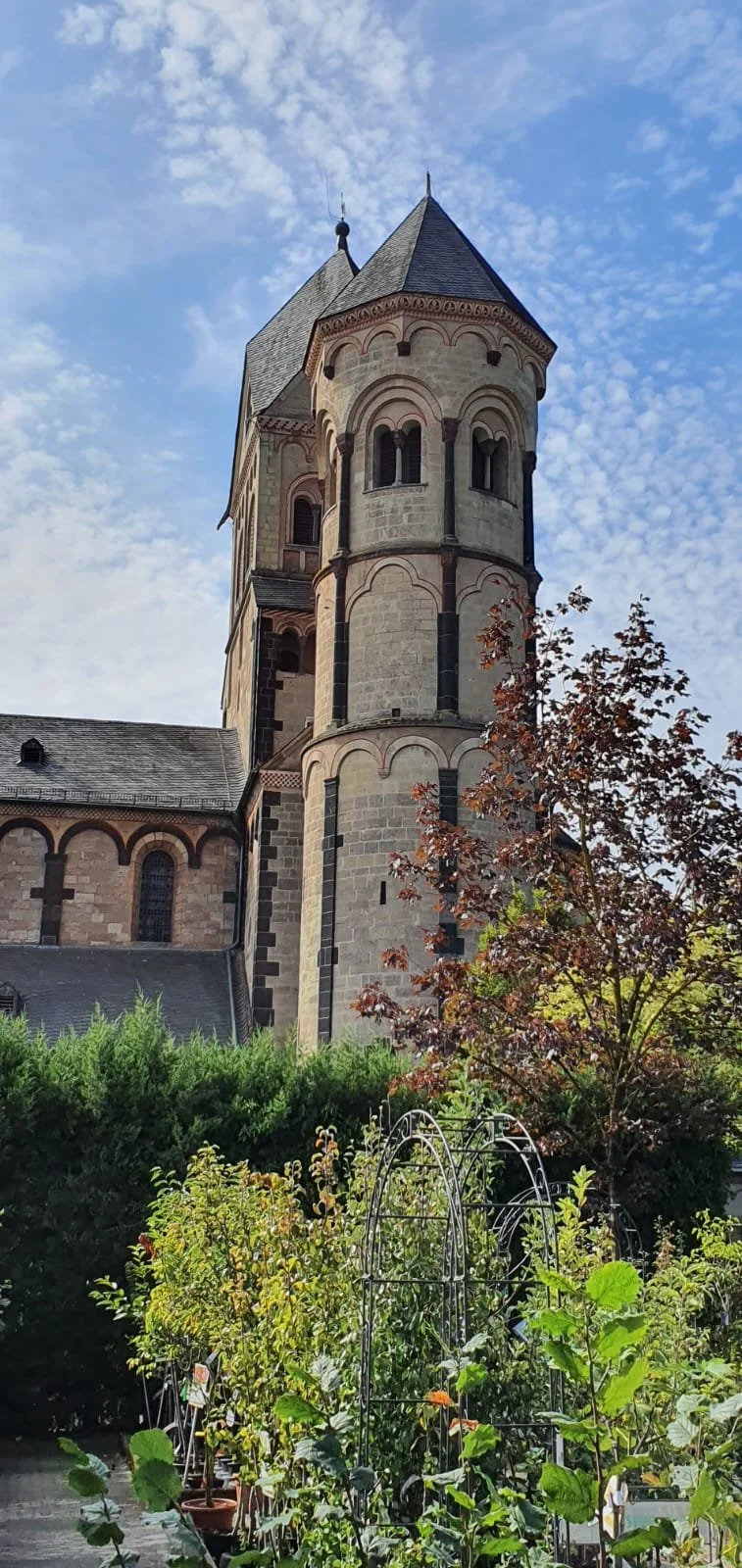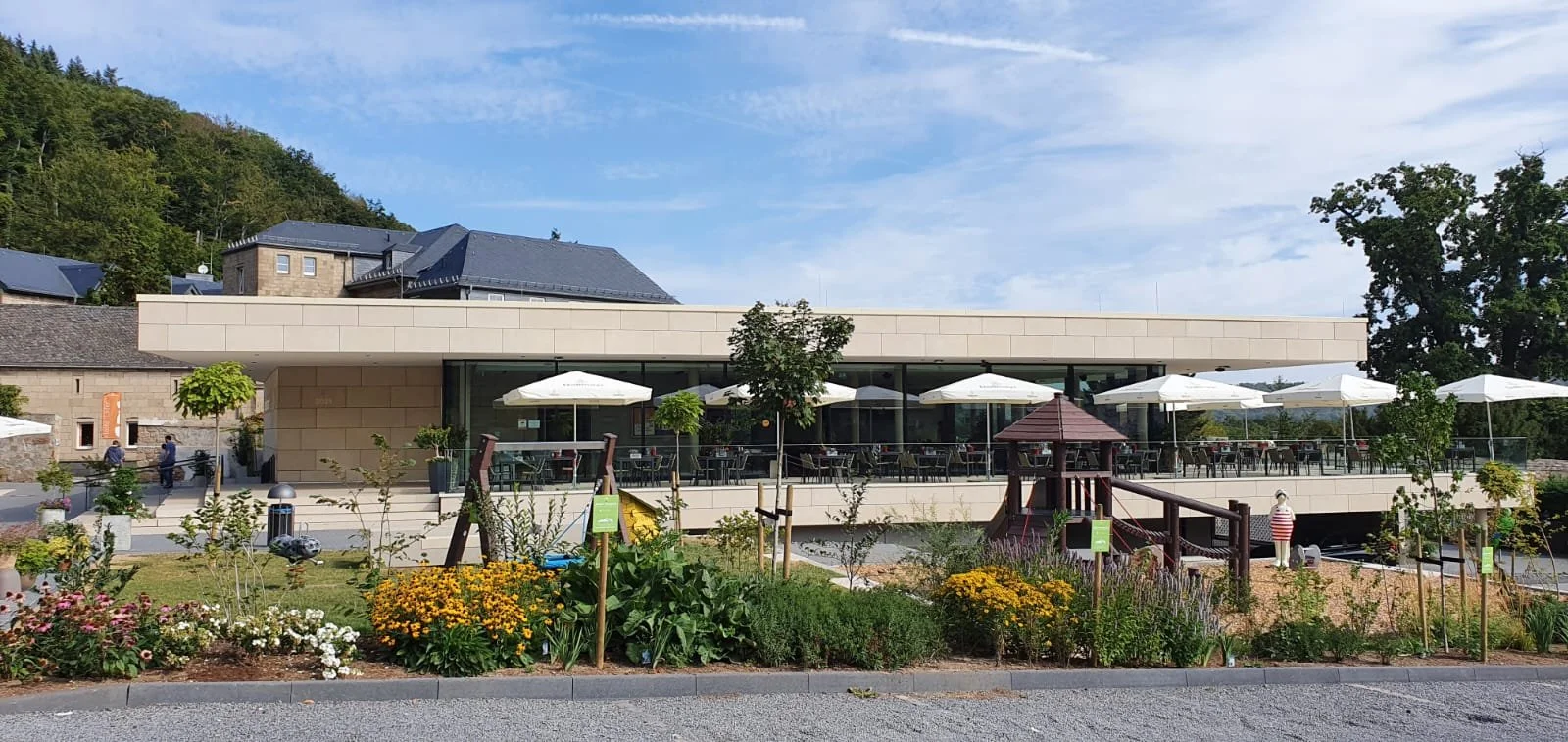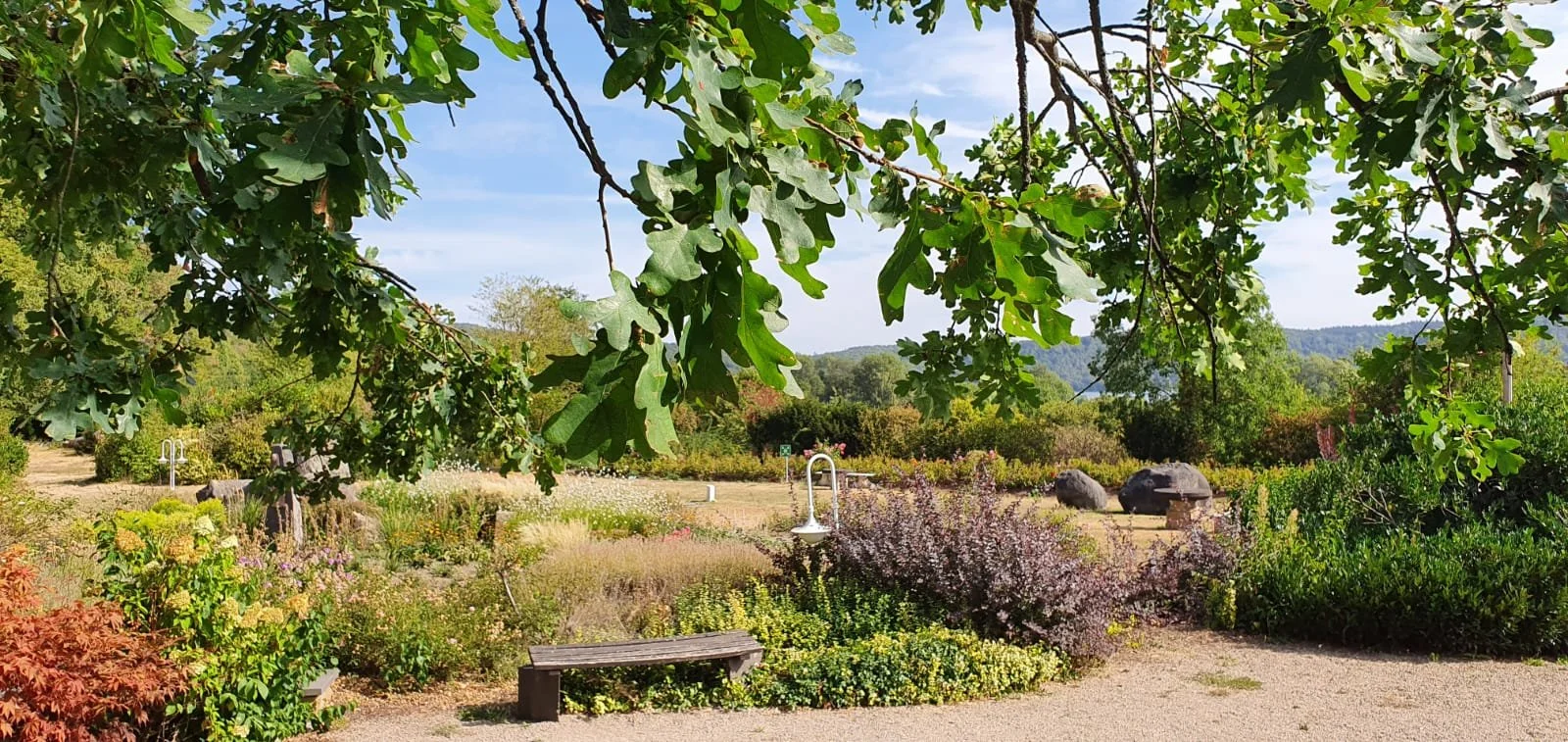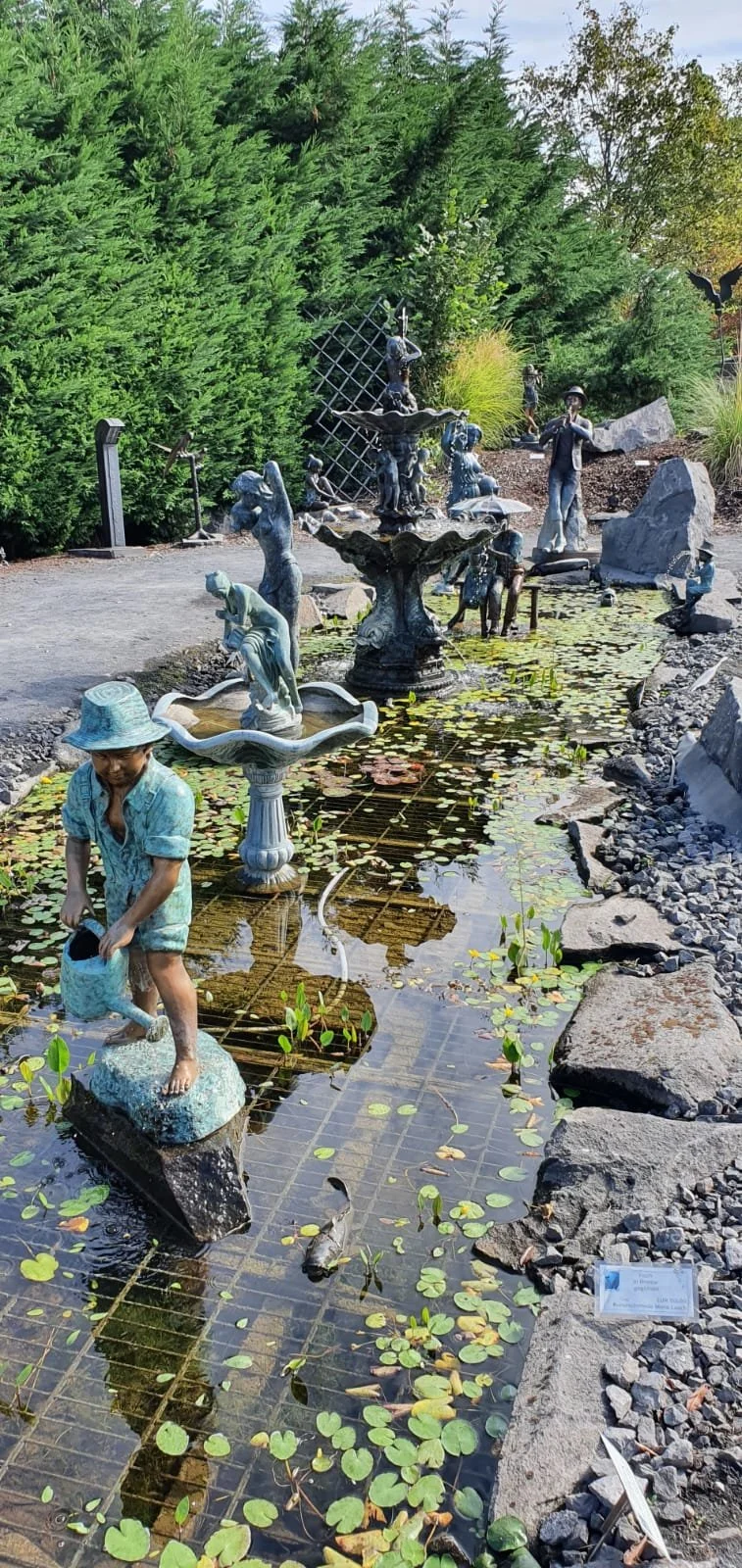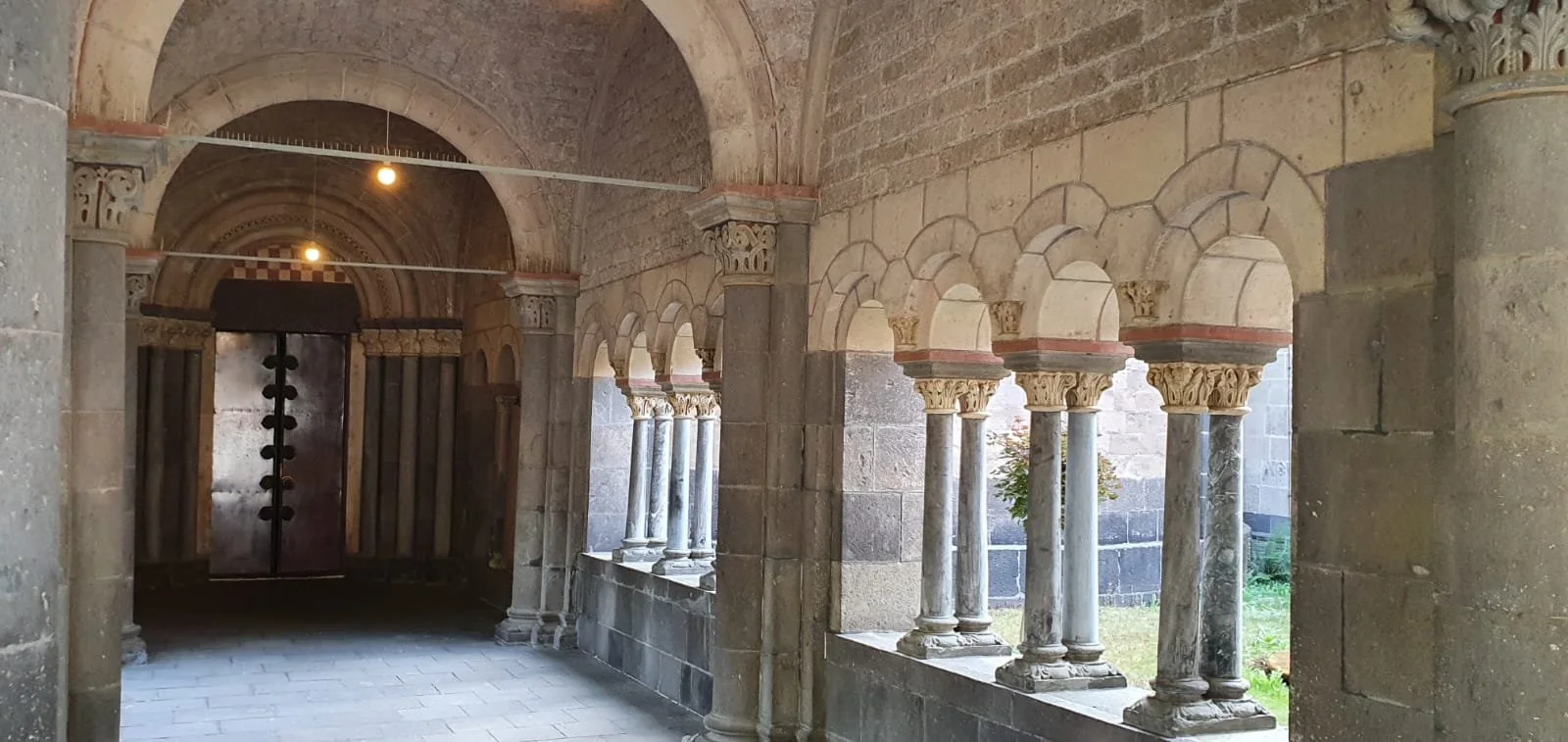Maria Laach
Maria Laach is one of the most outstanding examples of German Romanesque church architecture. The abbey with its own nursery, workshops, bookstore, and shop for traditional handicrafts attracts over a million visitors all year round.
The abbey church of Maria Laach is considered a masterpiece of German Romanesque architecture, with its multiple towers, large westwork with the arcaded gallery, and unique west porch. The east end has a round apse flanked by twin square towers. Over the transept crossing is a broad cupola with a cone-shaped roof. The monumental west façade includes a west choir with apse flanked by round twin towers and a square central tower.
Location: Maria Laach Abbey (in German: Abtei Maria Laach) is an abbey situated on the southwestern shore of the Laacher See (Lake Laach), near Andernach, in the Eifel region of the Rhineland-Palatinate in Germany.
1- Maria Laach Abbey Location
2- Maria Laach Abbey Location
Name: The abbey was built in the 11th-12th centuries and was originally known as "Abtei Laach" ("Abbatia Lacensis" or "Laach Abbey", meaning the "Lake Abbey") until 1862 when the Jesuits added the name "Maria".
Founder: Count Palatine Heinrich II of Laach and his wife Adelaide of Weimar-Orlamünde founded the cloister at the lake opposite their palatine castle in 1093.
Archbishop Hillin von Trier inaugurated the church in 1156 and around 1230 the last part of the church, the porch, the so-called paradise, was completed. The abbey church is one of the most valuable Romanesque churches in the Rhineland. When the French Revolution was abolished in 1802, the entire church was removed.
After private use, the Jesuits established their university here from 1862- to 1872, until 1892 again Benedictine monks settled in the monastery.
Since then, the monastery, which many visitors and guests also visit, has been the place of the monks for their worship and for their diverse work, which is supported by many employees from the region. Henry of Laach (in German: Heinrich von Laach) was the first count palatine of the Rhine (1085/1087–1095). Henry was the son of Herman I, count of Gleiberg. Henry was a follower of Henry IV, Holy Roman Emperor. He had landed in the southeastern Eifel and on the Moselle River.
Tomb of Henry of Laach at Maria Laach Abbey
His wife; Adelaide of Weimar-Orlamünde
Historical Background
In common with most other German Benedictine houses, Laach declined during the 14th century in terms of its spiritual and monastic life, a tendency which was reversed only in the late 15th century, under the influence of the reforming Bursfelde Congregation, which the abbey joined, supported against a certain resistance within the abbey by Abbot Johannes V von Deidesheim (1469–1491).
Laach Abbey was dissolved in the secularisation of 1802. The premises became the property, first of the occupying French, and then in 1815 of the Prussian State. In 1820 the buildings were acquired by the Society of Jesus, who established a place of study and scholarship here.
The abbey structure dates from between 1093 and 1177, with a paradisium added around 1225 and is considered a prime example of Romanesque architecture of the Staufen period. Despite its long construction time the well-preserved basilica with its six towers is considered to be one of the most beautiful Romanesque buildings in Germany.
Laach became an independent house in 1127, under its first abbot, Gilbert. The abbey developed as a centre of study during the 12th century.

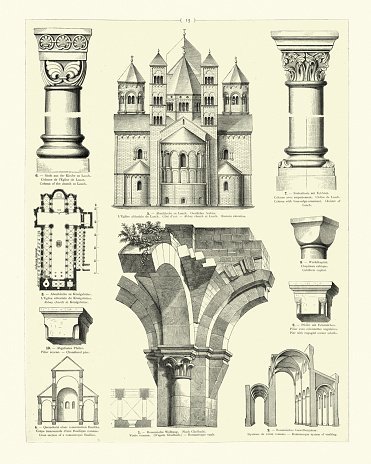
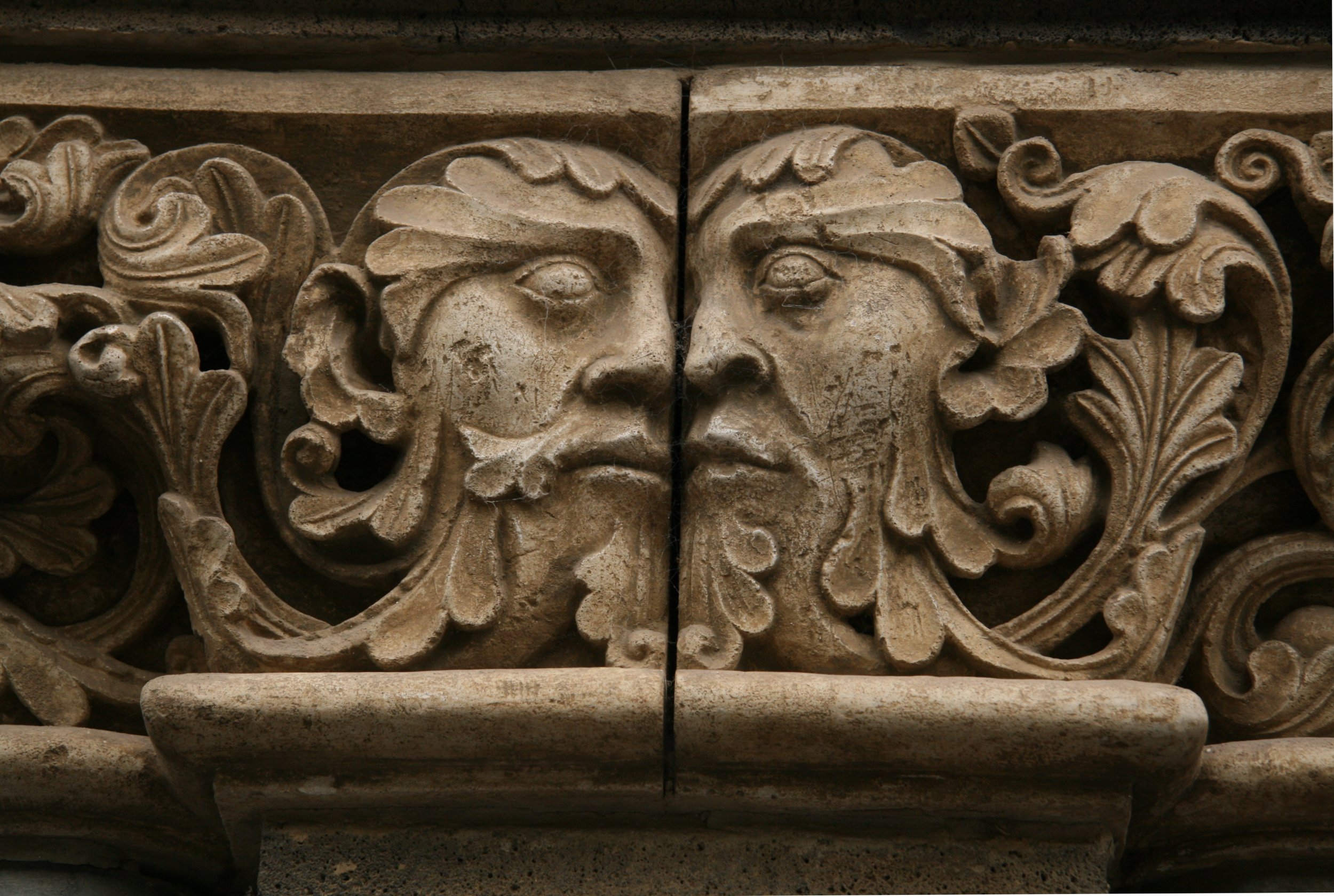
The Maria Laach Abbey has been at the center of a controversy over its relations with the Nazi regime between 1933 and 1945. In particular Heinrich Böll, depicting in Billiards at Half-past Nine a Benedictine monastery whose monks actively and voluntarily collaborated with the Nazis, is generally considered to have had Maria Laach in mind.
The Paradise, a single-story, colonnaded west porch surrounding a small courtyard, was added in about 1225. It recalls the architecture of Early Christian basilicas. Its capitals are richly carved with human and mythical figures. The imaginative mason is known as the Laacher Samson-Meister or 'Master of the Laach Samson,' whose carvings are also found in Cologne and elsewhere. The Lion Fountain in the courtyard was added in 1928.
Notable features of the interior include the tomb of the founder Pfalzgraf Heinrich II (dating from 1270), 16th-century murals, a Late Romanesque baldachino in the apse, and interesting modern decorations such as mosaics from c.1910 and stained glass windows from the 1950s
pictures of the Building from the outside and more details about the design
Due to a considerable reduction of the lake level in the early 19th century, serious and unexpected structural damages to the church vaults and roofs were detected. Three important renovation campaigns took place - the first in the 1830s to repair the structural damages including the removal of the paradisium"supper story (it had an upper storey at that time for accommodation facilities), the second in the 1880s including repairs after a serious fire in the southern round tower in 1885, and the third in the 1930s. Many former changes to the buildings carried out in Gothic (e. g. steep tower roofs) and Baroque style (e. g. wider windows) have been re-altered to Romanesque style.

